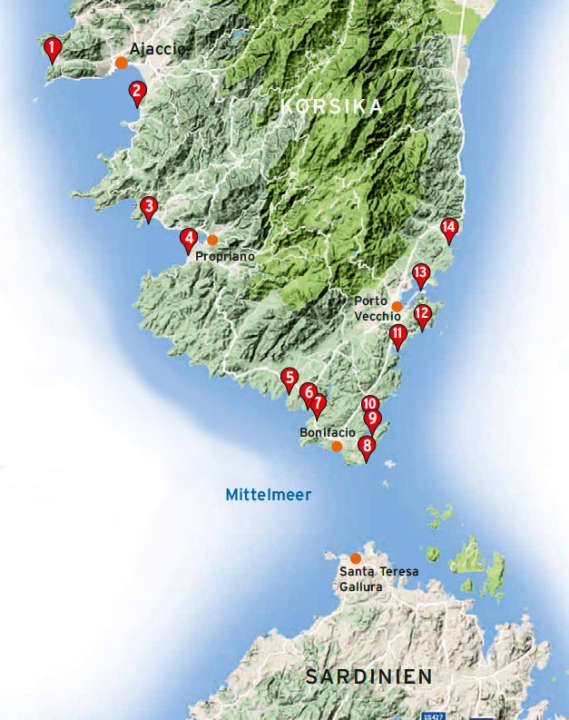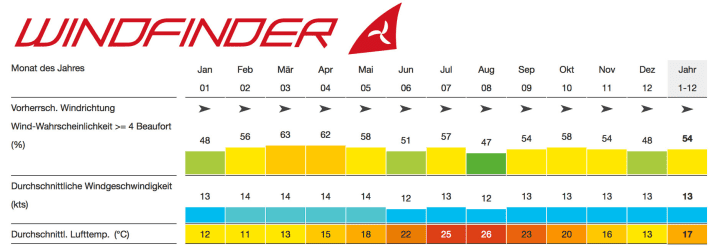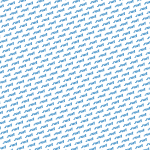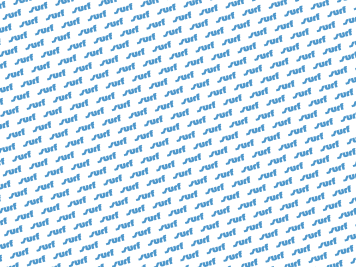Spots in this article:
"Island of beauty" - the name "L'Île de Beauté" used for Corsica in France is no coincidence: from the top of the highest mountains down to the steel-blue and sometimes even emerald-green sea, everything seems to be a single masterpiece of nature.
If you drive down to the coast from the high alpine regions via the winding mountain passes, the scent of the maquis, the evergreen scrub forest, mingles with that of wild lavender, myrtle and strawberry trees.
The island's most famous son, Napoléon Bonaparte, is said to have once said that he would recognise Corsica blindfolded by its smell - if you drive through the wild, sparsely populated highlands lined with 50 mountains over 2000 metres high with the window open, you will immediately believe it. The mild climate allows the orange and lemon trees to blossom in spring and the smell of wild boar roasting over chestnut wood wafts through the small alleyways of the mountain villages. All place names are labelled in French and Corsican, whereby the French place name is either sprayed over with graffiti, taped up or riddled with bullets.
With bombs against Paris & commerce
The Corsicans have long been at loggerheads with the French government. In the 20th century, Corsican culture was fought so rigorously by the French authorities that even the Corsican language was banned in schools and public life. However, these restrictions fuelled the resistance movement all the more - bomb attacks and politically motivated murders were part of everyday life for the radical offshoot of the independence movement for a long time in order to emphasise their demands for independence. It was only at the beginning of the 21st century that the then President Jospin succeeded in easing the violent conflict through extensive special rights and concessions, and the armed struggle of the separatist movement was officially ended in 2014.
To this day, however, the inhabitants have retained their strong sense of identity: Referring to a Corsican as "French" ends with nasty looks and an abrupt end to the conversation - you feel like a Corsican and, if necessary, a European, but certainly not French. However, it is precisely this stubbornness towards France that is so fortunate for the island itself.
Corsica - the Anti-Côte d'Azur
Countless investors have already tried to transform the island's beautiful coastline into a second Côte d'Azur - with hotel castles, private beaches and marinas for the rich and famous. However, the resistance of the locals regularly exceeded all expectations and the district and regional administrations also showed no interest in having their coasts transformed into a second Saint-Tropez. If all else failed and an investor did manage to obtain permission to build a holiday resort, acts of sabotage and bomb attacks on the shells of the buildings followed, meaning that numerous projects had to be shelved. To this day, there are hardly any large hotel castles in Corsica and because a party that emerged from the independence movement won the elections at the end of 2015 and entered the Corsican territorial administration, this is unlikely to change any time soon. Hotel castles or not - this doesn't mean that Corsica can't get crowded in high summer. But the tourists are spread across smaller hotels, guest rooms or campsites hidden in pine forests. There's also a lot going on on the water in high season, with spots, car parks and beaches shared with swimmers, kiters, sailors and other water fans - but it never gets as crowded as elsewhere. In the low season, on the other hand, it can happen that you find yourself on a deserted dream beach and desperately search for the reason why nobody wants to be here - without finding it, of course.
With almost 1000 kilometres of Mediterranean coastline, impressive mountain ranges, dense forests and deep valleys, it would probably take years to discover all the secrets of the almost 200-kilometre-long island. Time to make a start!
The best windsurfing spots in the south of Corsica
Corsica offers a variety of spots for windsurfers - from flat water to world-class surf:

1) Capo di Feno
The Plage de Grand Capo di Feno is located a few kilometres south of the rocky cape and is particularly popular with surfers and SUP fans. Windsurfing sessions are rare there, as they require strong winds from the north, which usually only occur in the winter months. Getting in on the sandy beach is still easy, but on creamy days, big waves break over a reef with wind from the right. Because the current is noticeable and there are rocks lurking in case of crashes, experts feel more at home here. In summer, you can cruise in the flat water with onshore thermals - although the wind here is always much weaker than further south.
2) Porticcio
With a view of the harbour town of Ajaccio, you can join sailors and kiters on the water at the Plage de la Viva yacht club. Equipment can also be hired here. A south-westerly to westerly wind is ideal, blowing constantly and onshore into the large bay. In strong winds, some wind waves build up for jumping and apart from the moderate shore break, the bump & jump conditions are uncomplicated. W-NW is also possible, but is a bit gusty.
3) Porto Pollo
No, we didn't make a mistake with the island - like Sardinia, neighbouring Corsica also has its Porto Pollo. The summer thermals from the south-west are a little stronger here than in Porticcio, with moderate flat water conditions and a few chops for jumping. You can board directly in Porto Pollo at the supermarket. Alternatively, you can get on the water at the mouth of the river south of Camping Cyrnos - however, the car parks, beaches and water can get very crowded in high summer. Strong westerly winds (mistral) can cause shore breaks and challenging swells, which unfortunately can hardly be used for surfing due to the steeply sloping beach. On the other hand, the water remains wonderfully smooth with an offshore north-easterly wind, which is somewhat gusty due to the hilly hinterland.
4) Propriano
When the mistral is pounding mercilessly around Bonifacio, things are more moderate further north. At "Kuhstrand" (Plage aux Vaches), located directly west of the small airport of Propriano, you can expect strong surf in westerly winds in front of a beautiful and extensive sandy beach - albeit in flat onshore conditions and therefore only interesting for backside wave riding at best. Summer thermals from the SW are also rideable and harmless. Local tip: Summer thermals are even more beautiful and with sideshore winds a little further west on Campomoro beach.
5) Figari
Thanks to its SW-NE orientation, the deeply incised and partially shallow bay of Figari is perfect for catching the summer thermals. You can access the water from both shores - the north-east side is better developed, while the south-west side is more unspoilt and wild. The Plage de Figari not far south of the harbour on the south-east side of the bay is ideal - here the water remains shallow and waves certainly don't interfere with manoeuvring ambitions in the shore area - rather the numerous swimmers and boats that cavort here in high summer. Caution: There are some rocks just under the water in the shore area, which are only marked in summer. Further out, there are a few chops and plenty of space to heat up and do tricks. A surf school has also established itself here - one of the top spots!
6) La Punta
The wave scene gathers here during mistral storms, with sets up to mast-high breaking on the offshore reef. Thanks to sideshore to sideonshore winds from the right, jumps and wave rides are equally possible - but also rough exits and broken equipment, as the wave is powerful and, apart from a few sandy corners, the shore is rocky. On heavy days, it's best to ask the locals, who are sure to find their way here. The approach through the Pampa is challenging, alternatively you can park opposite in La Tonnara and walk up to the La Punta spot, which takes about 15 minutes.
7) La Tonnara
This spot is particularly popular in easterly winds, which are noticeably stronger here than at other spots in the area thanks to local amplification. You can easily launch from the main beach and enjoy the perfectly flat water. Only when the mistral is strong do the incoming swell waves break over the small, offshore reefs as jump ramps - but the bottom line is that things are much more relaxed here than in La Punta. When the mistral is moderate, there are still swell waves - behind the offshore islands there are also smooth spots for speed runs and freestyle. Just be careful of some rocks! Infrastructure with car parks and a surf school are also available - an attractive atmosphere is standard here anyway.
8) Piantarella
You'll inevitably get that Caribbean feeling when you glide over the bright green water at the region's most popular spot! Westerly winds arrive here as downdrafts - locally stronger, but also somewhat gusty and offshore. Crossing and water starts are therefore a must if you go out on the water in this wind direction. You can start at the Bonifacio Windsurf Centre and head for the sandbank, where you can stand in the shallow water and work on your manoeuvres. With long fins, the water under the fin sometimes gets tight here. On days with a very strong mistral, there are even a few waves around the cape, but mostly it remains flat water with some chop. The easterly wind is much more constant, blows onshore and is ultimately the better wind direction for this dream spot. The only drawback: Piantarella gets extremely crowded in high summer - on land and on the water.
9) Santa Manza
One of the most beautiful shallow water spots on the island! Behind the village of Gurgazu, along the southern shore of the bay of Santa Manza, there are various stretches of beach that are ideal for getting in. Thermal SW or NE winds are ideal, blowing sideshore from the left or right. SW winds are often stronger than at other spots and bring the finest flat water for heating and tricks, while a few swell waves also find their way into the bay in NE winds. There are some rocks lurking in the water near the shore - be careful here. Because the dolphins in the region are interested in the nearby fish farm, surfers regularly have animal company here in the afternoon.
10) Balistra
The next dream bay! The way there from the N198 in the direction of Plage de Balistra takes around 15 minutes along a mogul track. But the bumps are worth it! You can park close to the beach, with a westerly wind blowing downwind - locally stronger, but also gusty and offshore. However, the water downwind of the beautiful, shallow sandy beach is as smooth as glass and perfect for speed surfing and freestyling. However, safe cruising is a basic requirement! An easterly wind is also possible, but transforms the speed slope into a moderate wave spot with a flat onshore wind, waves up to two metres high and some shorebreak.
11) Santa Giulia
Here, too, the water colours and ambience are as kitschy as they are beautiful - so you don't have to hope to have the spot, parking spaces and beach to yourself. If the summer thermals are a little more southerly, Santa Giulia is a good choice with a flat, sandy entrance and smooth water. In SW to W it becomes offshore and increasingly gusty. Strong E to NE winds even push a few waves into the large bay, but even here you have to be prepared for onshore conditions that are only good for a few jumps and backside rides at best. All in all, it's more of a place to enjoy the wonderful scenery on windless days.
12) Palombaggia
Not far north-east of Santa Giulia, Tamaricciu/Palombaggia is a seamless addition to the collection of postcard motifs: Crystal-clear water, white sand, some standing area and all of this framed by chic rock formations. The price: crowds of tourists in high summer! Due to the better orientation, you can catch strong NE winds here almost sideshore from the left and ride and jump in moderate and safe wave conditions. However, you can use the summery SW thermal conditions much more often for enjoyable cruising.
13) Porto Vecchio/Golfo di Sogno
There is another popular freeride spot on the northern shore of the bay of Porto Vecchio, which also works in typical and sometimes somewhat gusty fair-weather thermals from SW to W and offers uncomplicated flat water conditions. The best entry point is the small Plage du Benedettu, where the wind comes in sideshore from the right and you can easily get into the water. The only thing you should keep an eye on is the busy boat traffic to the nearby harbour. If it's calm, it's worth taking a trip to the chic old town of Porto Vecchio.
14) Pinarellu
Pinarellu is a fickle spot! If you're lucky enough to catch one of the winter storms from the north-east, you can catch a great wave session with a diagonal onshore wind from the left on this beautiful beach lined with pine trees north of Porto Vecchio. The waves are then equally suitable for frontside wave rides to leeward and jumps. The entry is flat and over sand - easy! The only problem is the wind window: if it turns too much to the north, the wind no longer comes into the bay; if it turns to the east, it becomes onshore and difficult to overcome the surf zone.
Windsurfing in Corsica - general information
Journey
Travelling by motorhome is ideal, ferry connections with Corsica Linea and Corsica Ferries are available from the French ports of Marseille, Toulon and Nice to Porto Vecchio, Ajaccio or the ferry ports of Bastia and L'iIle Rousse in the north of Corsica (journey time: 12-13 hours). Alternatively, Moby Lines offers a cheaper and faster crossing from the Italian ports of Livorno and Genoa to Bastia (journey time: 5-7 hours). The prices for a crossing vary between 80 and 300 euros each way, depending on the season, route and vehicle size.
Information about the ferry crossings can be found here:
Compared to this, flights are sometimes even cheaper - Lufthansa, Eurowings, Austrian Airlines and others regularly fly to Bastia Airport (from 150 euros/route). As always, it is important to check the airlines' baggage conditions and to register surf baggage in advance!
Wind & Weather
Corsica can be a year-round destination for the hardy. In winter, temperatures on the coast rarely fall below 10° Celsius and the water never drops below 13 degrees. If you can, skip the holiday season in July and August and come in the low season when the beaches are less crowded. April to June and September/October are ideal - pleasant temperatures of 20-25° Celsius are the norm, with water temperatures hovering around 20 degrees. It gets hot in midsummer, but rarely unbearable at 30 degrees. In terms of wind, spring and autumn are also the best, with an average of 60 percent of the days in Bonifacio being windy (>12 knots). The most common wind direction is the Mistral (NW-W) blowing across the Mediterranean from the Rhone Valley and the warm Libeccio (SW), which is strengthened by the jet effect between Corsica and Sardinia. In summer, the reliable thermals from the south-west in particular ensure regular gliding fun with larger sails, with the spots in the south being particularly favoured. All in all, the possible range extends from moderate planing wind for the 7.0 freeride sail to high-pressure fuelling for the 3.7 - it's best to be prepared for all eventualities and pack the whole fleet.

Living & Camping
Corsica offers countless accommodation options - from campsites under pine trees to 5-star luxury suites, everything is available. In addition to the usual internet platforms, you can also take a look at www.bonifacio.fr help you find a place to stay. You can definitely react more flexibly to wind and weather as a camper. Here is a selection of places close to the spot:
Porticcio
Porto Pollo
- www.lorientecamping.fr
- Camping U Caseddu: Tel.: +33 (0)495 740180
- Camping Cyrnos: Tel.: +33 (0)495 740055
- www.camping-hotel-propriano.com
Propriano/Campomoro
- Camping de la Vallée: Tel.: +33 495 742120
La Punta/Figari
La Tonnara
Piantarella
Santa Manza
Santa Giulia
Palombaggia
Golfo di Sogno
Pinarellu
Surf stations & hire
Large "Club Nautiques" usually have all kinds of water sports equipment on offer - from catamarans to SUP boards. The prices for (sometimes outdated) hire equipment are unfortunately sometimes high (25-30 euros/hour). In the "real" windsurfing centres, e.g. in Piantarella or Figari, you can at least expect to find up-to-date equipment. Overall, however, it is advisable to bring your own equipment!
All surf centres at a glance
Porticcio
Propriano
Figari
La Tonnara
Piantarella
Santa Giulia
Palombaggia
Pinarellu
Surf shops
- Tam Tam Bonifacio: www.tam-tam.fr
- Alizé Porto Vecchio: www.alizesurf.fr
Shady sides
Some of the prices are quite high. As everywhere, you should not leave any valuables visible in the vehicle in the larger cities. Lots of mosquitoes on the east coast - pack mosquito repellent!
This spot guide first appeared in surf 6/2017







